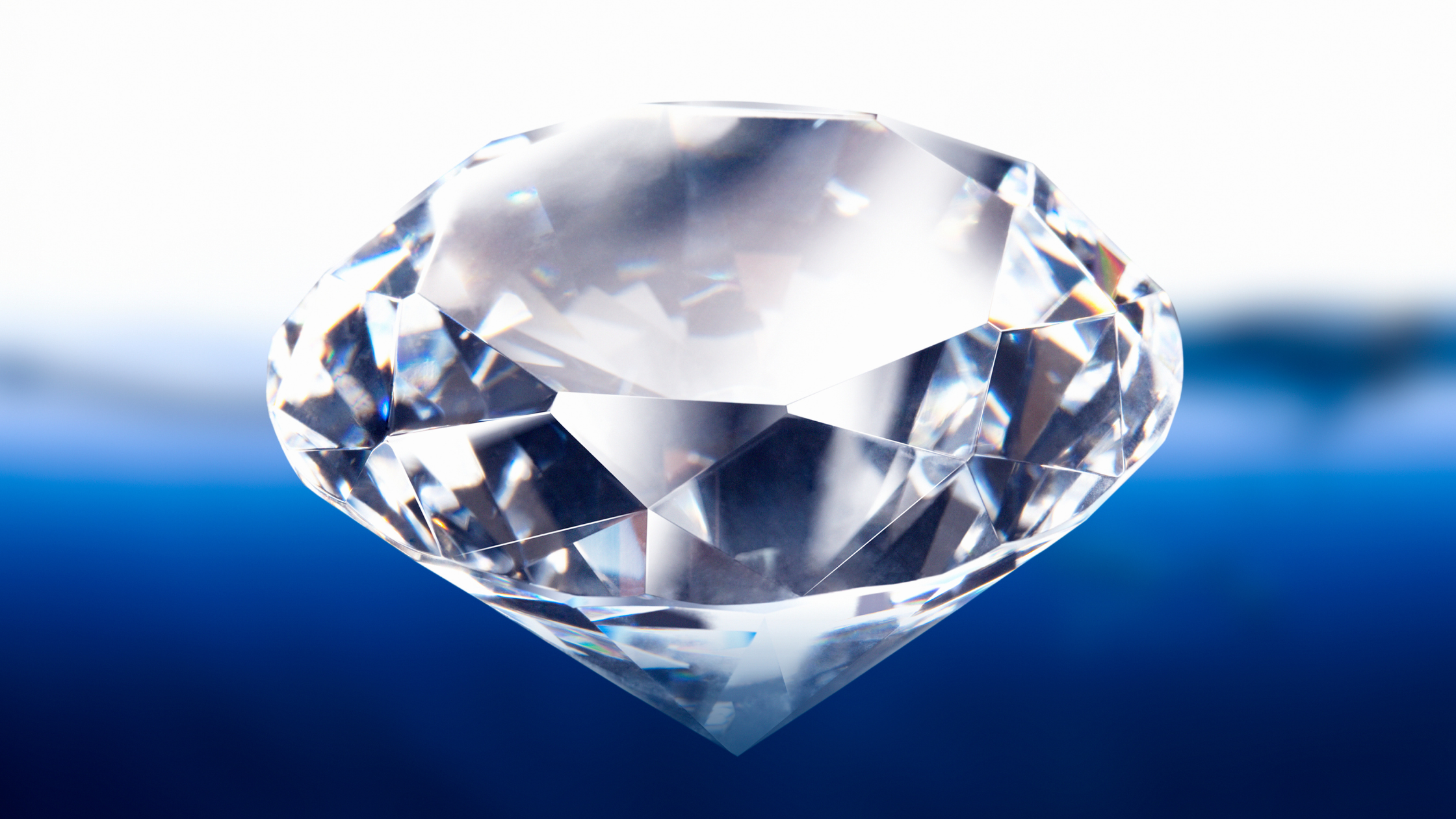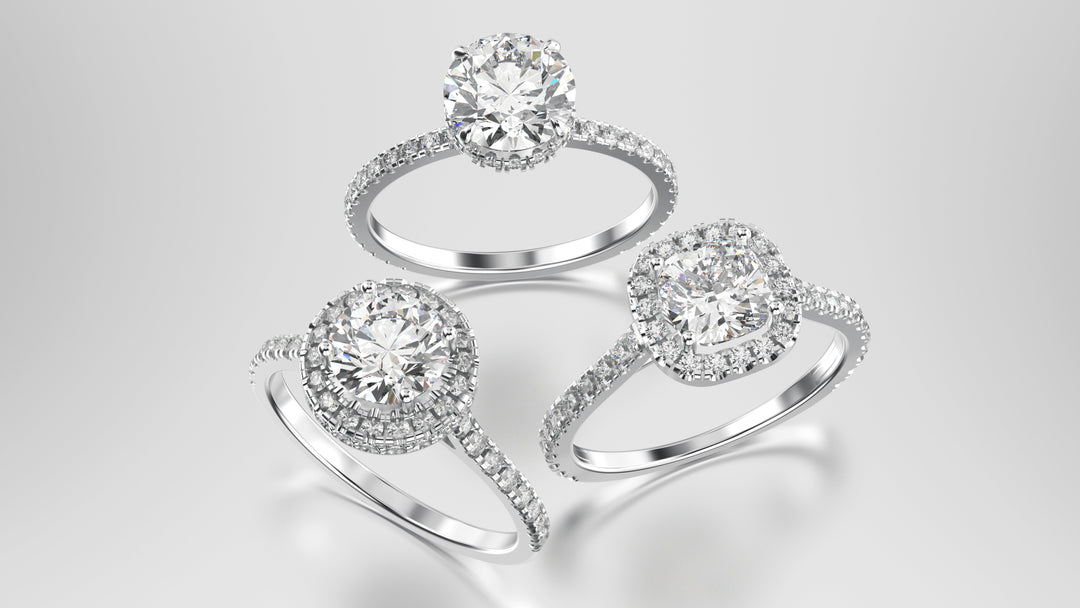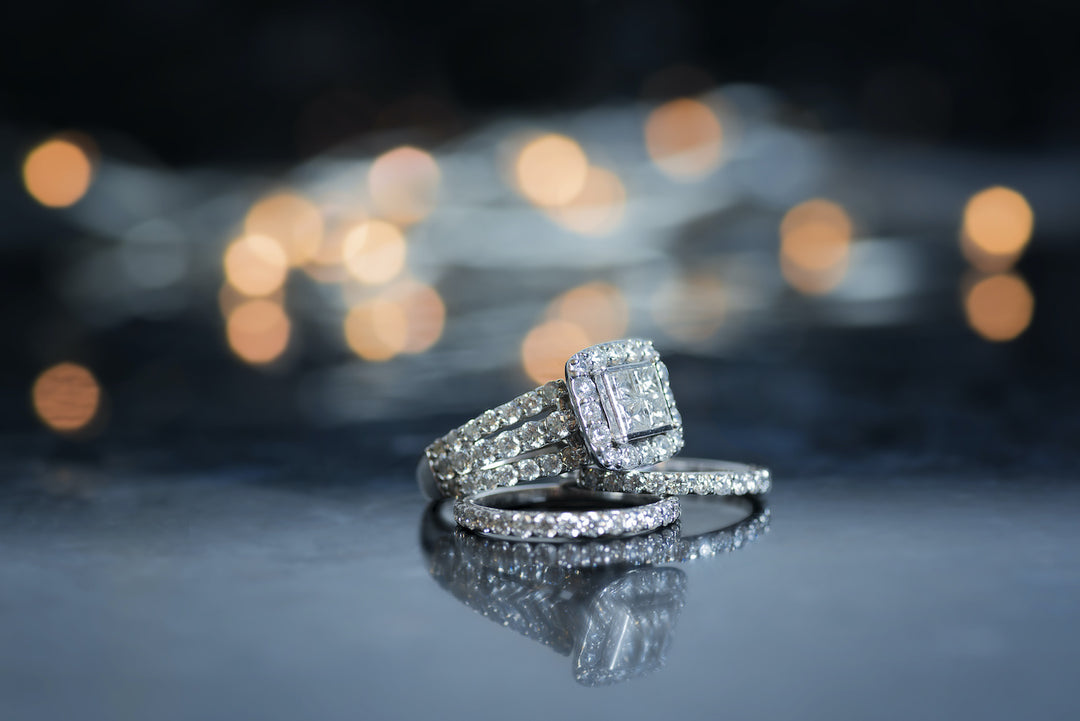Diamonds are renowned for their captivating sparkle, a mesmerizing interplay of light that has fascinated admirers for centuries. But what exactly gives a diamond its brilliance and fire? This blog will delve deeply into the factors that contribute to a diamond's sparkle, providing a thorough understanding of this dazzling phenomenon.
The Science of Light and Diamonds
Refraction and Reflection
When light enters a diamond, it slows down and bends due to the change in medium from air to diamond, a process known as refraction. Once inside, the light reflects off the diamond’s internal surfaces. If these surfaces, or facets, are well-aligned, the light is reflected multiple times before exiting the diamond, creating brilliance.
Dispersion and Fire
Dispersion occurs when white light is separated into its spectral colors as it passes through the diamond. This separation creates flashes of color known as "fire." The degree of dispersion depends on the diamond's cut and quality. Well-cut diamonds display vibrant, colorful flashes that enhance their visual appeal.
Scintillation
Scintillation refers to the pattern of light and dark areas seen as a diamond moves. This "sparkle" effect is a combination of the diamond's brilliance and fire. High-quality diamonds exhibit a dazzling display of light due to their excellent scintillation.
The Role of Diamond Cut
Importance of Proportions
The cut of a diamond is the most crucial factor in determining its sparkle. A well-cut diamond reflects light from one facet to another, dispersing it and returning it to the eye. Ideal proportions maximize the diamond's ability to reflect light, enhancing its brilliance.
Table Size and Depth
The table size (the flat top surface of the diamond) and the depth (the height from the table to the culet) are key proportions that affect light performance. An optimal table size and depth ensure that light is properly refracted and reflected within the diamond.
Crown and Pavilion Angles
The angles of the crown (the upper part of the diamond) and the pavilion (the lower part) are critical for directing light. Ideal angles ensure that light enters, bounces within, and exits the diamond through the top, maximizing brilliance and fire.
Symmetry and Polish
Symmetry
Symmetry refers to the precise alignment and arrangement of the diamond's facets. Poor symmetry can cause light to leak out of the sides of the diamond, reducing its brilliance. High symmetry grades indicate that a diamond will have excellent light performance.
Polish
Polish refers to the smoothness of the diamond's surface. Well-polished diamonds have fewer surface blemishes, allowing light to pass through more cleanly. This enhances the diamond's overall sparkle.
Diamond Shapes and their Impact on Sparkle
Round Brilliant Cut
The round brilliant cut is specifically designed to maximize a diamond's sparkle. With 58 facets arranged for optimal light reflection, this shape provides unparalleled brilliance and fire. It is the most popular and highly regarded diamond shape for its exceptional sparkle.
Princess Cut
The princess cut, with its square shape and sharp corners, offers impressive brilliance and fire. It is a modern favorite that rivals the round brilliant cut in sparkle when well-cut.
Cushion Cut
The cushion cut combines rounded corners and larger facets, providing a romantic and vintage appeal. While it may not sparkle as much as a round brilliant cut, it still offers significant brilliance and fire.
Marquise and Oval Cuts
Marquise and oval cuts have elongated shapes that create a unique sparkle. Their larger surface area can make them appear larger than their carat weight, enhancing their visual impact.
Quality Factors Influencing Sparkle
Clarity
Clarity refers to the presence of internal or external imperfections, known as inclusions and blemishes. High clarity diamonds have fewer inclusions, allowing light to pass through more easily, enhancing the diamond's sparkle. However, inclusions strategically placed can be hidden within the facets, minimizing their impact on sparkle.
Color
The color of a diamond can also affect its sparkle. Diamonds are graded on a color scale from D (colorless) to Z (light yellow or brown). Colorless diamonds allow more light to pass through and reflect, resulting in greater brilliance. Slight tints of color can absorb light, reducing the diamond's sparkle.
Enhancing Sparkle Through Settings
The setting of a diamond plays a crucial role in enhancing its sparkle. Different settings can maximize light exposure, reflect light back into the diamond, or even amplify its overall brilliance. Let's explore how various settings contribute to a diamond's sparkle.
Prong Settings
Prong settings are designed to hold the diamond securely with minimal metal contact, allowing maximum light exposure. Typically, four or six prongs are used to hold the diamond in place, lifting it above the band. This elevated position enables light to enter the diamond from multiple angles, enhancing its brilliance.
Bezel Settings
Bezel settings surround the diamond with a thin metal rim that encircles the stone's girdle. This provides excellent protection against knocks and chips, making it a practical choice for those with active lifestyles. While bezels may slightly limit light entry compared to prong settings, they still allow significant light to enter from the top, enhancing the diamond's sparkle.
Reflecting Light
A well-crafted bezel setting can enhance a diamond's brilliance by reflecting light back into the stone. The metal rim can act like a mirror, bouncing light that enters from the top back into the diamond, contributing to its sparkle.
Halo Settings
Halo settings feature a central diamond surrounded by a circle (or "halo") of smaller diamonds. These smaller diamonds reflect light into the center stone, amplifying its brilliance and creating a dazzling effect. The halo of diamonds also makes the central stone appear larger, enhancing its overall visual impact.
Pave and Micro-Pave Settings
Pave and micro-pave settings involve setting small diamonds closely together with minimal metal visible, creating a continuous surface of sparkle. These settings can be used to enhance the center stone and add brilliance to the band or other parts of the jewelry.
Intricate Craftsmanship
Pave settings require meticulous craftsmanship to set each small diamond securely. Micro-pave settings, using even smaller diamonds, demand even greater precision. The result is a stunning, shimmering effect that complements the central diamond's sparkle.
Popular Uses
Pave and micro-pave settings are often used in engagement rings, wedding bands, and statement pieces. They can enhance the overall brilliance of the piece without overpowering the central diamond.
Channel Settings
Channel settings involve setting diamonds between two parallel metal walls, creating a secure and stylish look. This setting type protects the diamonds while allowing light to enter from above, contributing to their sparkle.
Seamless Appearance
Channel settings offer a seamless, uninterrupted line of diamonds, making them ideal for bands and eternity rings. The diamonds in a channel setting reflect light off each other, enhancing their collective brilliance.
Bar Settings
Bar settings hold diamonds in place with metal bars on either side, leaving the top and bottom open to light. This setting type combines the security of a bezel with the light exposure of a prong setting, offering a modern, elegant look.
Enhancing Sparkle
The open sides of a bar setting allow light to enter from multiple angles, enhancing the diamonds' sparkle. The metal bars also add a unique design element, creating a striking visual contrast.
Conclusion
A diamond's sparkle is the result of a combination of factors, including its cut, shape, clarity, color, and setting. The round brilliant cut stands out for its unparalleled ability to reflect light and create dazzling brilliance and fire. By understanding these factors and taking proper care of your diamond jewelry, you can ensure that your diamonds continue to shine brilliantly for years to come.
For more information on diamond cuts and to view our stunning collection, visit Wm. Harold & Sons. Have questions or need assistance? Feel free to contact us or make an appointment with one of our experts today. Share your experiences and reviews on our blog or social media. We look forward to serving you!





